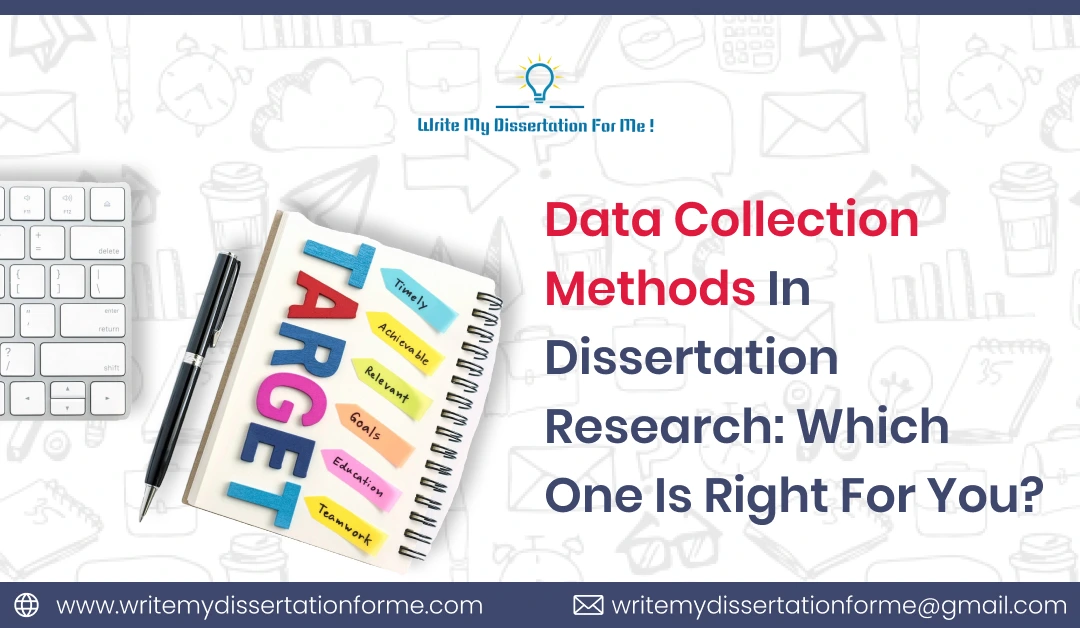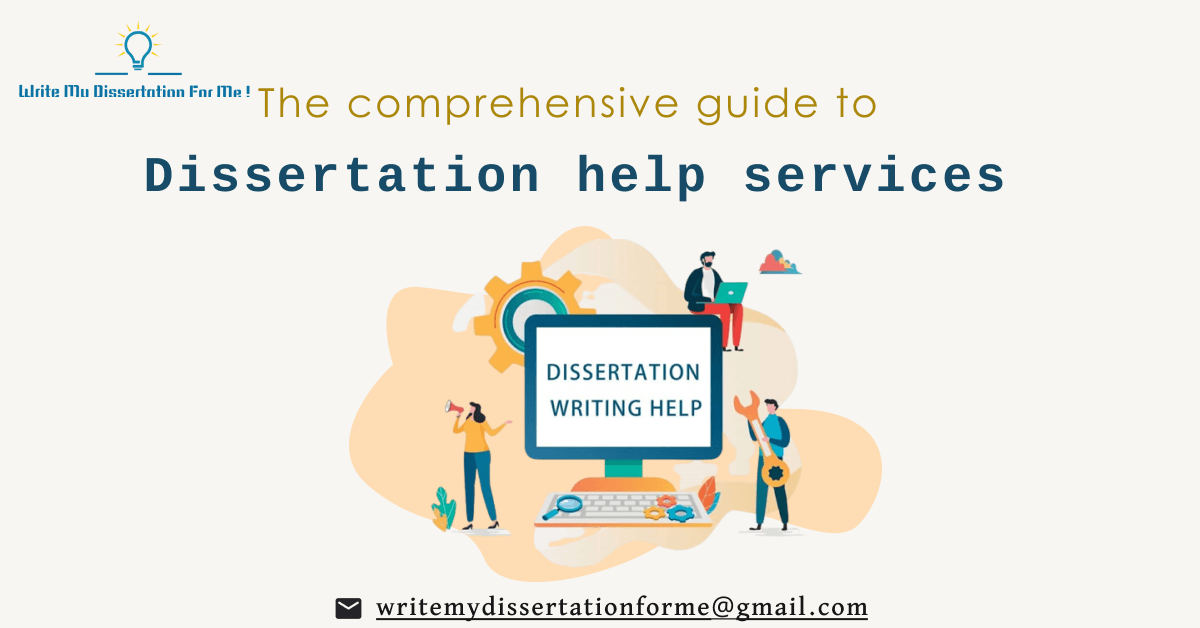Data Collection Methods in Dissertation Research: Which One is Right for You?
October 26 2024 | 06 min read

Selecting the appropriate data-gathering strategy is an important stage in dissertation research. Your method selection influences the reliability, validity, and application of your findings. This tutorial examines prominent data-gathering strategies in dissertation research and offers advice on how to select the appropriate one for your research question and aims.
Understanding Data Collection for Dissertation Research:
Data collection is the process of acquiring and measuring data in order to assess and answer research questions. In dissertation research, your data collection strategy must be consistent with your research design and objectives, ensuring that the information you collect is relevant and accurate.
Primary versus Secondary Data Collection:
- Primary Data Collection is gathering fresh information directly from individuals or sources. Interviews, surveys, and experiments are some examples of this.
- Secondary data collection entails examining existing data from sources such as databases, literature, and government reports.
Choosing between primary and secondary data largely depends on your research question and available resources. Primary data is often more relevant but can be time-consuming and costly. Secondary data is easier to access but may not perfectly match your research needs.
Common Data Collection Methods for Dissertations:
Each data collection method has distinct advantages, disadvantages, and perfect applications. Here are some of the most popular strategies in dissertation research:
1. Surveys and questionnaires:
Surveys are a popular quantitative data collection tool that involves asking participants a series of standardized questions. They can be distributed online, by email, or in person. Surveys are extremely effective in gathering enormous volumes of data from a large population.
Benefits:
- Cost-effective: Surveys are generally inexpensive and quickly distributed.
- Broad reach: You can collect data from a large and diversified audience.
- Standardization: Using uniform questions allows for easier comparison of responses and statistical analysis of results.
Challenges:
- Response Bias: Participants may answer inaccurately due to social desirability or misunderstandings.
- Limited Depth: Surveys lack the depth of personal interviews and may not capture complex nuances.
When to Use: Use surveys for large-scale quantitative data collection in research. They are useful for investigating population-wide trends, attitudes, or behaviors.
2. Interviews:
Interviews are a qualitative method in which you engage individuals in one-on-one or group discussions to acquire detailed information. They can be structured, semi-structured, or unstructured, depending on the degree of flexibility and depth required.
Benefits:
- Rich, Detailed Data: Interviews offer in-depth insights into participants' perspectives and experiences.
- Flexibility: Questions can be changed throughout the interview to cover unexpected topics.
- Personal Interaction: Interviewees may be more comfortable disclosing sensitive material in a conversational situation.
Challenges:
- Preparing, conducting, and transcribing interviews can be time-consuming.
- Subjectivity: Data analysis can be subjective since people interpret responses differently.
- Limited Sample Size: Due to time and economic constraints, interviews often involve fewer participants, which may restrict generalisability.
When to Use: Interviews are best for exploring complex topics that require detailed, personal insights, such as studying motivations, behaviors, or personal experiences.
3. Observations:
Observational research entails directly monitoring people in their natural environment, without interference. Observations can be structured (directed by certain criteria) or unstructured (allowing for any important behavior).
Benefits:
- Real-Time Data: Observing behaviors as they happen can lead to more authentic data.
- Contextual Understanding: Observations capture context and nonverbal clues, providing a more complete understanding of behavior.
- Minimal Participant Bias: Participants in observational research may behave more spontaneously, resulting in more authentic findings.
Challenges:
- Limited Control: It is difficult to control external factors during observation.
- Observer Bias: Researchers' perceptions can influence their interpretation of observed activities.
- Ethical Concerns: Observing someone without their knowledge might lead to ethical difficulties.
When to Use: Observation is ideal when studying behavior in natural settings, like studying classroom dynamics, employee interactions, or consumer behavior in retail environments.
4. Case studies:
A case study is a detailed examination of a single subject or a small group of subjects across time. They offer a full grasp of the case in its real-world context.
Benefits:
- Detailed Insight: Case studies allow for a thorough investigation of specific topics or events.
- Contextual Understanding: You may observe how variables interact in a real-world situation.
- Versatility: Case studies can use a range of data sources, including interviews, observations, and documents.
Challenges:
- Time-consuming: Conducting and analyzing in-depth case studies requires a significant amount of time.
- Limited Generalizability: The findings from a single case may not apply to larger populations.
- Data Overload: Having a big volume of data might make analysis difficult.
Case studies are ideal for exploring unusual or complex events, requiring a thorough understanding of the subject's surroundings and experiences.
5. Document Analysis:
Document analysis is the investigation of existing documents, such as academic papers, reports, official records, and media sources, in order to obtain information. This is usually a secondary data collection strategy.
Benefits:
- Convenient and Cost-Effective: Document analysis saves time and money because data is easily accessible.
- Wide Range of Sources: You can use historical or unavailable data for different purposes.
- Non-Intrusive: There is no interaction with participants, therefore ethical problems are limited.
Challenges:
- Relevance and Quality of Data: Existing documents may not precisely match your research topic.
- Potential Biases: Documents might reflect the authors' biases.
- Limited Freshness: Documents may be out of date, particularly for rapidly changing themes.
When to Use: Document analysis is a great option if you’re researching historical topics, policies, or if budget and time constraints prevent primary data collection.
6. Focus Groups
Focus groups involve guided discussions with a small group of participants to gain insights into their perceptions or opinions on a specific topic. This method is qualitative and interactive, allowing participants to build on each other's ideas.
Benefits:
- Group Dynamics: Interaction among participants can reveal insights that individual interviews might miss.
- Efficient Data Collection: You can gather diverse opinions in one session.
- Quick Results: Discussions are generally faster to conduct and analyze than individual interviews.
Challenges:
- Groupthink: Participants may conform to group opinions, which can bias results.
- Moderator Bias: The facilitator's influence can sway the group's responses.
- Logistical Challenges: Organizing and moderating a focus group might be difficult.
When To Use: Focus groups are effective when you want to gather thoughts or perspectives on a certain issue and might benefit from participant interactions, such as studying consumer attitudes or testing new product concepts.
How to Select the Right Data Collection Method:
Choosing the best data collection strategy is dependent on a number of criteria, including your study objectives, available resources, and desired data type. Here are a few guidelines to help you decide:
1. Align with your research question:
The research question forms the basis of your data collection strategy. Ask yourself:
Do I require in-depth insights or a broad understanding?
Am I measuring variables or investigating behaviors?
Example: If your query is about "What factors contribute to student motivation?" Qualitative procedures such as interviews or focus groups would yield rich, detailed information. A poll would be more successful in answering the question "How many students report high motivation levels?"
2. Consider Sample Size and Accessibility:
Determine how many people you can include in your study and how accessible they are. Surveys can accommodate huge samples, but interviews, focus groups, and case studies are better suited to smaller, more accessible samples.
3. Evaluate time and budget constraints:
Certain procedures, such as interviews and observations, can be time consuming and costly. If you have limited time and money, surveys or document analysis may be more appropriate.
4. Consider data kind (quantitative or qualitative):
Determine whether your research requires quantitative (numerical) or qualitative data (textual). If both are required, a mixed-method approach that incorporates surveys, interviews, or case studies may be the best choice.
5. Ethical considerations:
Some procedures, like as observations, create ethical considerations, particularly when participants are unaware they are being observed. Ensure that the method you choose is ethical.
Conclusion:
Choosing the appropriate data collection approach is critical for gathering relevant and accurate information for your dissertation. Each method, whether surveys, interviews, observations, case studies, document analysis, or focus groups, has distinct advantages and disadvantages. You can choose the optimal method for your research by matching it with your research topic, sample accessibility, resources, and ethical issues. With careful planning and a thorough comprehension of each method, you'll be well-prepared to collect useful data for your dissertation.
If you loved reading this, please share this,
also read

The comprehensive guide to dissertation help services
Writing a dissertation can be an overwhelming task, and many students struggle to develop the skills they need...

Write My Political Science Dissertation For Me
Is the thought of having to write your dissertation in political science overwhelming you? Are inquiries such as Can I hire s...

Dissertation Methodology An Introduction:Tips & Guide
Starting a dissertation is a huge undertaking, similar to scaling a mountain in academia. The methodology section, a crucial ...